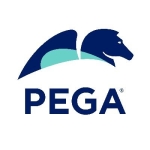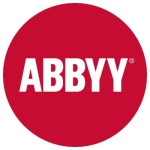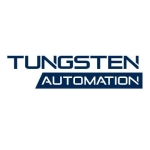I have built multiple solutions. Many times we have used Automation Anywhere for data entry. At times, we have used it for Excel Automation tasks. We have also used it to create a virtual assistant agent to improve employee productivity and remove manual tasks.
We built a solution for an airline client where they had to scrub more than 5,000 PNRs on a daily basis, which was not possible with manual tasks, so we deployed a bot there. The bot is doing the scrubbing on behalf of the agent and sending the report at an interval of one hour. Because of this, we could achieve 100% more productivity. Previously, such tasks were done manually. After automation, there is no need for any person to sit for this task.
We are not only using it to automate manual tasks. We are also using it to overcome other challenges.
We are using Automation Anywhere with other applications. We have Python scripts and Java scripts. We do face multiple challenges while automating. Sometimes, Automation Anywhere does not have the required compatibility, so we have to go with another application. For example, if we want to do some kind of highlighting in an Excel file, it is not possible with Automation Anywhere. In such cases, we have to go with some third-party tools, VBA script, PowerShell script, etc.
Automation Anywhere has been helpful for tasks that are repetitive or do not require human intervention. If human intervention or decision-making is required, that task is not possible with Automation Anywhere. Also, if a task is using multiple applications, it becomes complex for Automation Anywhere or any RPA solution.
Automation Anywhere is not very hard to learn for business users. Like any tool, it requires some learning. It takes one to three months for a business user to use Automation Anywhere. There are many learning resources available at Automation Anywhere University. There are complete or end-to-end courses available about Automation Anywhere. You can also do certification in Automation Anywhere.
Automation Co-pilot has been helpful when any human intervention is required in the RPA process. If I need human intervention, I can use Automation Co-pilot where a human can intervene and make a decision on the basis of the data. Based on the decision, we can go ahead with the remaining processes. This is now possible. It is a very useful feature.
It improves productivity. Previously, there were many manual tasks that people had to do on a daily basis. Those tasks are now taken care of by bots, and people can focus on other tasks. It has improved productivity by 30%. We have deployed Automation Co-pilot for 700 users, and there is about a 30% increase in productivity.
We have more accuracy. Bots are more accurate than humans. Previously, there were high chances of human errors. With automation, errors have been reduced. There is more productivity and accuracy.
We have integrated Automation Anywhere with multiple applications. We have integrated it with Salesforce. We have integrated it with Windows services for Windows-based automation. We have also integrated it with other applications based on the requirements.
We have seen time savings, but it is hard to measure time savings. The time savings vary from process to process. For example, it takes a person three to four hours on a daily basis to download the reports, do the scrubbing, and generate the report. With automation, such repetitive tasks can be performed by a bot, and the person can do more productive tasks.
Similarly, the cost savings also vary. Sometimes, we are able to save more. It depends on the data and volume.
It is easy to learn and easy to deploy. That is the best part compared to the other RPA solutions available in the market. Automation Anywhere is easier than UiPath and Blue Prism.
In terms of cost, Automation Anywhere is cheaper than UiPath and Blue Prism. These are the advantages of Automation Anywhere, but other solutions have their own advantages.
There is a limitation with Automation Anywhere where if you want to build your own packages and deploy them, it is very difficult.
Integration with other applications can also be difficult at times.
Except for Automation Anywhere University, there are not a lot of education resources available for Automation Anywhere. They need to build a strong community for Automation Anywhere where any user or developer can post questions and get answers. That would make things very easy for us.
Its stability and support also need improvement.
I have been using Automation Anywhere for close to five years.
Since the last two updates, we are having issues with Automation Anywhere. Our automation is not working properly on the Chrome application. They are saying that it is because of Chrome. From the stability point of view, I have a little bit of doubt.
I would rate Automation Anywhere an eight out of ten for stability.
It is scalable. I would rate it a nine out of ten for scalability.
We have about 26 people in our RPA team. In my organization, there are about a thousand people who are impacted by Automation Anywhere's automation on a daily basis.
We have raised multiple tickets with Automation Anywhere, but we were not able to find a proper solution from them. I am not very satisfied with their support.
Their support needs improvement. They do not have a proper answer or justification about why we are facing certain issues. When we raise a ticket, we want an RCA so that we do not face the same issue the next time. They are not able to provide an RCA. That is the main issue. I would rate their support a seven out of ten.
I have a lot of exposure to UiPath and Blue Prism. As compared to UiPath, Automation Anywhere has many limitations. Queue-based workload is not very feasible with Automation Anywhere. It is very difficult to use for that. I do not see many users using queue-based automation. That is a limitation that we have right now. UiPath and Blue Prism are good in this aspect. The queue implementation is very easy, and there are multiple things that we can achieve from the queue.
It took about four weeks to deploy Automation Anywhere on-prem, do the basic settings, and do all kinds of installation.
Currently, we have to upgrade our license. Previously, we had the enterprise version with a limited license. We are now expanding the license.
For deploying it on-prem and doing the installation, we have our IT team with about seven people.
We also have seven people to support us if there is any issue with the Automation Anywhere service or any difficulty with the VM on which we have deployed Automation Anywhere.
Over the five years, we have seen 50% to 60% ROI.
Automation Anywhere is cheaper than UiPath and Blue Prism. From a market point of view, Automation Anywhere is reasonable. Any organization can adopt Automation Anywhere.
If you are looking for an RPA solution and have cost restrictions, I would recommend Automation Anywhere. It is easy to use.
We are still evolving in terms of RPA. We have a roadmap. We have not yet used the AI capabilities of Automation Anywhere. With the help of AI and other technologies, we will be able to achieve more productivity. We are looking into GenAI and RPA AI. There are so many things where we can implement AI, but as of now, we do not have the right project for that. We have to figure out where we can use it.
Overall, I would rate Automation Anywhere an eight out of ten. There is a lot of scope for improvement.




















